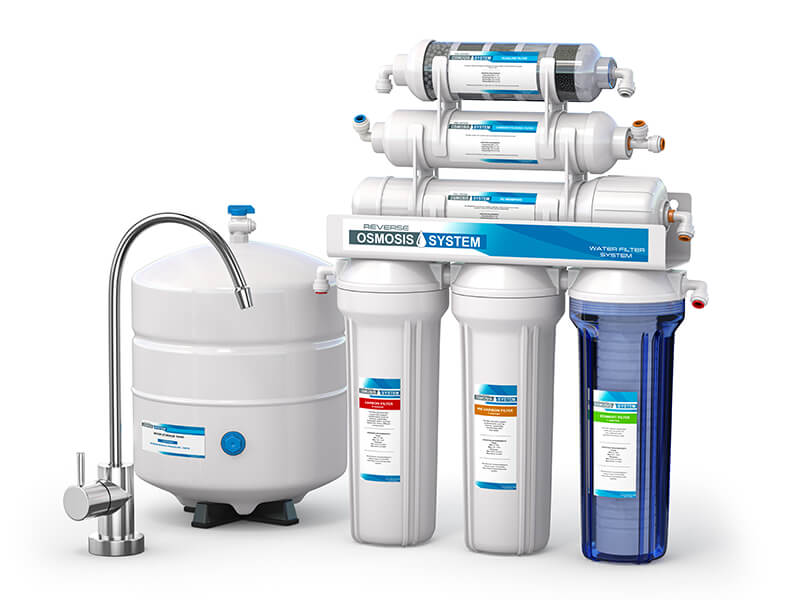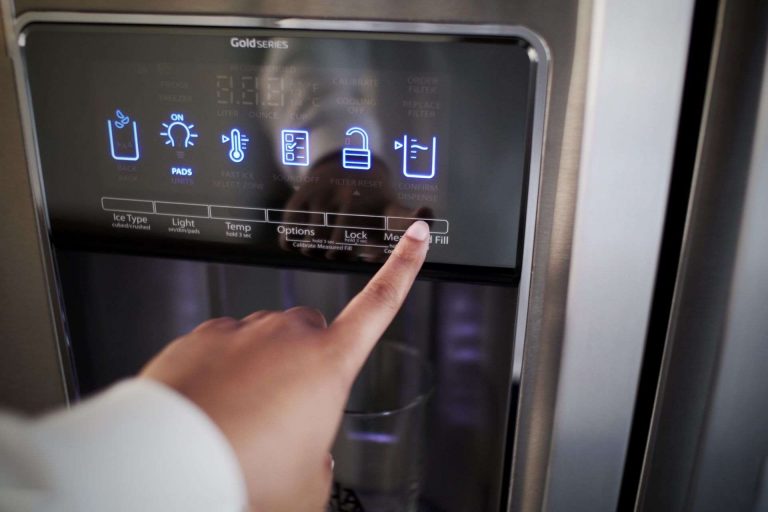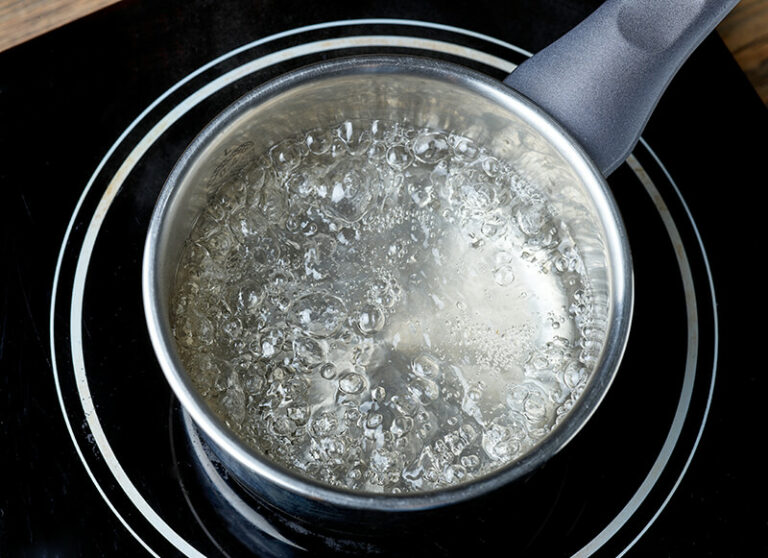Reverse osmosis is a water purification process that removes compounds, chemicals, and minerals from water, leaving you with something similar to distilled water but far less expensive. The result is not as healthy as distilled water for a few reasons.
Table of Contents
This may seem like a great way to get rid of toxins, excess bacteria, chlorine, and other contaminants, but because they remove so many substances from the water they also happen to remove the minerals that your body needs.
Naturally, reverse osmosis (of RO) has a few benefits, like getting rid of nearly all potential contaminants in the water. That’s good because you want clean water, but unfortunately, it also removes a lot of what is necessary to keep your body healthy.
Reverse osmosis doesn’t have to be so destructive, though. With water softener additions and some simple filtering steps, you can counter the problems of disinfection, mineral depletion, and foul taste with remineralization.
Fortunately, it’s possible to remineralize RO water with a natural mineral solution. In this article, I will share with you the most important techniques about how to Remineralize Reverse Osmosis Water.
How to Remineralize Reverse Osmosis Water – Top Tested Methods
There are a few simple things you can do to aid the process of remineralization in reverse osmosis systems. Here are the important techniques of how to remineralize reverse osmosis water
Method 1: Buy An RO System With A Remineralize Water Filter
In this method, you add a remineralize water filter to your reverse osmosis system, which will re-introduce the minerals that were removed in the RO process. This is the best way to remineralize reverse osmosis water and one of the most effective methods for adding minerals back into your body.
Some systems have this filter built-in, so check your owner’s manual if you think that might be the case. If it doesn’t come with one, or you don’t own a reverse osmosis system yet but are planning to purchase one soon, look for a remineralizing filter as an optional component of your system when choosing it.
Method 2: Add Minerals Back In After The RO Filtration Process
This method is a little bit more complicated than the first one, but it will still do the trick of remineralizing your water after it has been run through reverse osmosis. You can add minerals back into the water using a variety of methods. One is to use a beverage dispenser that you fill with mineral-rich spring water.
This is a method of remineralizing reverse osmosis water because it’s so easy to do and you can refill the dispenser as often as you want. Most plants prefer spring water over purified water, which is what your RO system produces, so this helps out your plants too! The only negative is that you have to keep refilling the dispenser.
Method 3: Install A Remineralizer Or Extra Carbon Filter On The RO System Without Any Negative Effect
This method is purely recommended for people that have a reverse osmosis system and want to remineralize the water. In this method, you need to add a remineralizer or extra carbon filter to your RO system without any negative effects. This will not affect the process of Reverse Osmosis Filtering as it only adds minerals back to the water.
Method 4: Remove The RO Membrane And Replace It With One That Is Remineralizing
If you have an under-sink reverse osmosis system, you can remove the existing RO membranes and replace them with ones that are designed to add minerals back into your water. This is an effective way to both purify water and remineralize RO water.
Method 5: Use Mineral Drops To Add Minerals And Improve Taste After The Initial Filtering Of An RO System.
This method of how to remineralize reverse osmosis water is the most basic and can be used with any system that does not already have a way of adding minerals back.
Add Epsom salt or mineral drops into your dispenser filled with RO water. This will introduce some key minerals like magnesium and sulfate, which play an important role in keeping your body healthy.
This is a simple and effective method for remineralizing RO water, while also improving its taste and smell, but it’s not as powerful as some of the other methods.
Method 6: Use Alkaline Drops To Create Healthy Ionized Water That Has Trace Minerals
This method is highly recommended for those who want to improve the taste of their RO water. Add alkaline drops into your dispenser filled with RO water. The alkalinity in these drops will neutralize the acidity in the RO water, creating ionized water that you can then drink without sacrificing its health benefits.
Method 7: Use A Water Ionizer System To Remineralize RO Water
If you don’t want the hassle of adding minerals back into your reverse osmosis water, look for an ionizer that automatically adds a variety of minerals. Not all ionizers do this, so make sure to research what your potential purchase will add back in before buying.
Why add minerals to RO water in the first place?
When you use reverse osmosis for purification, your drinking water is saturated with magnesium and calcium ions or carbonic acid. Although these substances are essential for life, they are not good for immediate consumption because of their acidic nature. That’s why some people opt out of distilled water instead of reverse osmosis.

Benefits of Adding Minerals to Reverse Osmosis Water
Even after the water has been run through reverse osmosis, it still does not closely resemble natural spring water. This is why adding minerals to your RO system will help bring it closer to its natural state and give you a better overall experience from the water that comes out of your faucet. Not only does this improve taste, but it also improves smell.
There are some benefits of adding minerals to reverse osmosis water:
- Plants love RO water – unfortunately, your plants do not. Plants thrive on the water with minerals like calcium, sunlight, and other nutrients. RO water is pure but flat-tasting because it lacks minerals that help improve the taste and smell of regular tap water. Adding minerals back in will make your plants happy!
- Minerals make reverse osmosis water taste better – If you have ever had RO water, then you know that it has a pretty unpleasant taste. Add minerals back and you will notice the difference in its flavor immediately. Of course, using an ionizer to remineralize will improve this even more.
- Minerals make reverse osmosis water healthier – as mentioned above, RO water is stripped of all minerals. If you are not adding minerals back in, then your RO water will be lacking trace minerals that help your body remain healthy and balanced. Mineral drops reintroduce many of the key minerals like magnesium and sulfate that are stripped from the water in a reverse osmosis system.
- Minerals make water more alkaline and ionized- This is particularly important for those who are health conscious. Alkalinity naturally occurs in springs, rivers, and other sources of the clean mineral-rich water. By remineralizing your RO water with minerals, you will be making it healthier and happier!
- Minerals help balance pH levels – The natural pH levels in our body are balanced at 7.4, which is neutral. Reverse osmosis removes a good deal of the minerals in your water before it reaches your tap, which can throw off your pH levels from both ends. By adding minerals back into your RO water, you will be helping stabilize its pH level to be more natural and healthier for drinking purposes.
- Minerals act as chelators – Reverse osmosis removes almost everything from your water, including toxic elements like lead and mercury. However, minerals naturally found in the earth can bind to these toxins and remove them from our bodies. This is why adding trace minerals back into RO water is so important for health benefits.
Frequently Asked Questions
- Is Remineralized water safe?
Yes, remineralized water is safe. Minerals are added back to take care of the concerns that may arise from RO water with no minerals. The addition of minerals does not change the pH level and thus it remains balanced at 7.0 as well as ensuring a healthy dosage of sodium levels that are beneficial for cellular growth.
- What kind of Minerals should I add?
The choice depends on your preferences and budget. You can buy bottled spring water that contains minerals or you can buy mineral drops. When choosing bottled water, make sure to get brands that contain more than just calcium and magnesium. Some will also have a good amount of sulfate (Sulfur), especially if they are marketed for hair/skin health.
- How do RO systems remove minerals?
Reverse Osmosis systems are designed to remove large amounts of minerals from your water. This is because most people prefer drinking “pure” water that lacks the taste and smell of chlorine, fluoride, copper, and other unwanted toxins. But if you want to reap all of the health benefits that come with remineralizing your RO water, then it is important to know that these systems take out a lot of minerals from your water supply.
- Does reverse osmosis water leach minerals from our bodies?
Mineral-rich water has been proven to be rich in calcium, magnesium, and other vital minerals for our bodies. Many people become constipated when using reverse osmosis because the lack of minerals can hinder digestion. By adding minerals back in, you will re-balance your body’s electrolytes and improve your overall health.
- RO water is acidic, how can we eliminate that without adding minerals?
This can easily be done by using a pH-balancing shower head to neutralize your RO water before it goes into your body. This will ensure the water is much healthier and safer for drinking. Using an ionizer in some cases will also help make sure the PH of your water is balanced.
- What happens to the minerals if I add them to my RO water?
When minerals are added to your reverse osmosis water, then they are not filtered out at all. The minerals will stay in your water and even help improve its taste.
Final Thoughts
It’s a great thing for anyone looking to both purify water and add trace minerals. Your body needs these elements to be healthy, but most people don’t get enough of them from food alone. Getting the right dose in your drinking water can help you achieve and maintain optimal health.
There are lots of ways to remineralize reverse osmosis water, but when you start looking at the details of each method it’s clear that some are better than others. If you want to get started right away, consider installing a remineralizer as part of your reverse osmosis system. You can also use a beverage dispenser or purchase an under-sink reverse osmosis system that is designed to add minerals back into your water.

I like you use water every day in everything I do. I love to find better ways to filter water I drink, soften hard water and find amazing water bottles for when I’m on the go.
I want to share what I find with you and review the options you might be looking for.
Author Profile – Tony Cosentino








I recently installed a reverse osmosis (RO) system in my home, and it has made a significant difference in the quality of our drinking water. Before installing the RO system, we relied on tap water or bottled water for drinking, which often had a slight taste and odor. We were concerned about the presence of contaminants and chemicals in our water, especially since we have young children.
After doing some research, we decided to invest in a high-quality RO system. The installation process was relatively straightforward
I have to disagree with the statement that reverse osmosis is far less expensive than distilled water. While reverse osmosis may be more cost-effective in the long run compared to buying bottled water, the initial investment for a reverse osmosis system can be quite high. Additionally, there are ongoing maintenance costs, such as replacing filters and membranes, which can add up over time.
The post discusses reverse osmosis as a water purification process that effectively removes compounds, chemicals, and minerals from water, resulting in a product similar to distilled water. It highlights the cost-effectiveness of reverse osmosis compared to distilled water.
In my opinion, reverse osmosis is a great option for those looking to purify their water without the high cost associated with distilled water. It offers a more affordable alternative while still providing clean and purified water. However, it’s important to note that